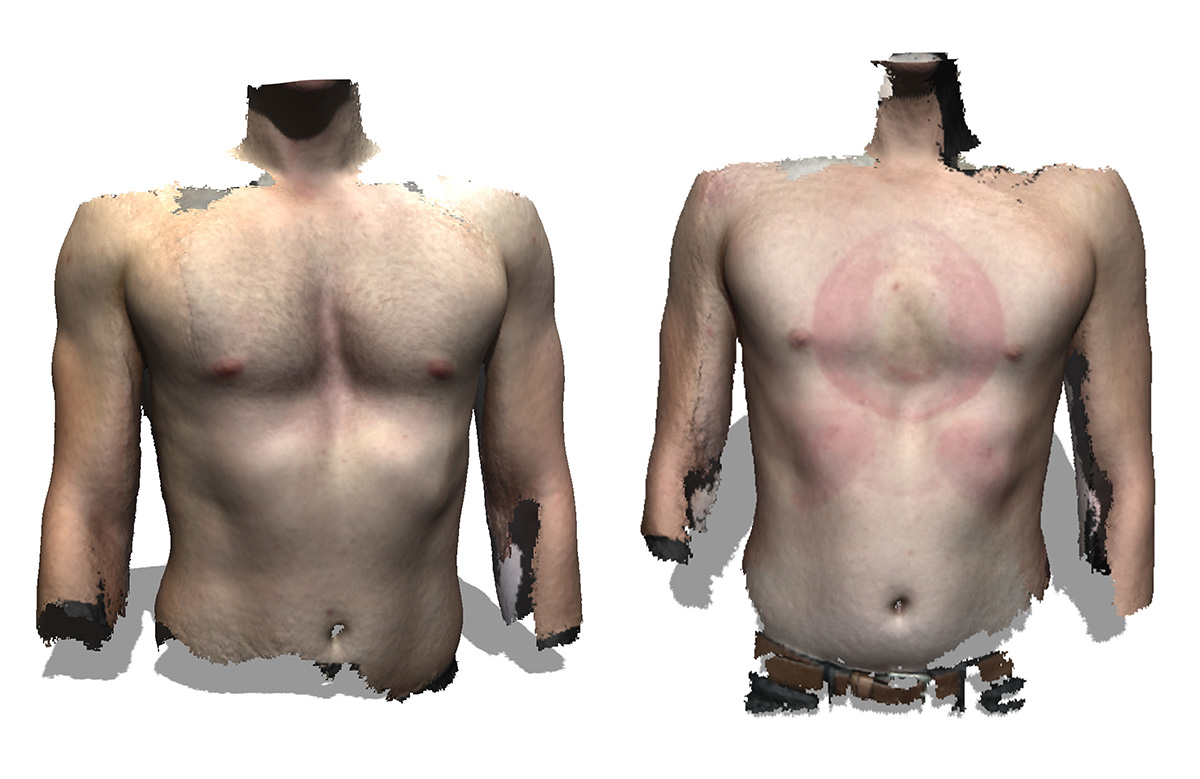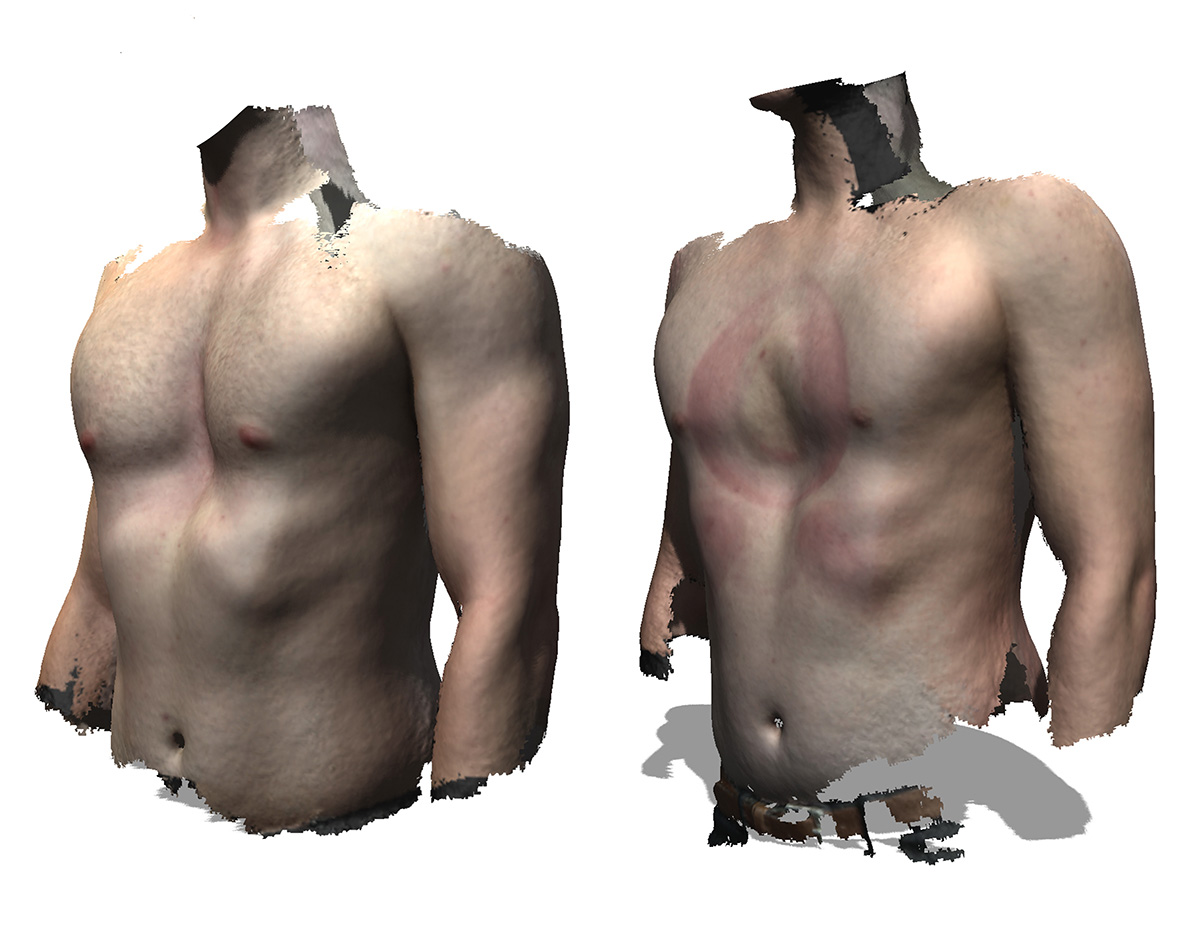
22 October 2024
Pectus excavatum (PE), also known as "funnel chest" or "sunken chest," is a chest wall deformity where the breastbone (sternum) is sunken inwards, giving the chest a caved-in or hollow appearance.
It occurs when the cartilage connecting the ribs to the sternum grows abnormally, causing the sternum to move inward. Pectus excavatum is sometimes present at birth and may worsen during puberty as the chest grows. It's believed to have a genetic component, as it can run in families. It is more common in boys than girls.
Charlie was aware of the condition because family members had it. They were treated surgically (with the Nuss procedure) on the NHS but by the time Charlie was considering treatment, surgery was not an option where he lived.
Charlie searched the internet and found the London Orthotic Consultancy. He remarks: “LOC’s website about their non-surgical treatment for PE was frankly the only one that made sense and as I didn’t live far from Kingston that was the clincher.” Charlie was assessed by Connor Mumford, one of LOC’s specialist pectus clinicians, in October 2022.
Charlie says: “I’d done a fair amount of reading before coming in for that initial consultation, I knew that the optimum age for non-surgical treatment were the teenage years and that as an adult (Charlie is 31), there needed to be some flexibility in my chest wall for treatment to work.
Connor tested my chest with the vacuum bell and it was immediately clear that my chest was responsive. Connor told me that my chest depression measured 40mm and that he was confident that using the vacuum bell device in combination with specific breathing exercises would result in a 50% correction if not more.”

Charlie's chest shape before (left) and three months after starting pectus excavatum treatment (right)
Sam Walmsley talks through the features of our slimline pectus brace
The vacuum bell is a non-surgical device used to treat pectus excavatum by helping to lift the sunken chest wall. It works by creating a vacuum over the chest, which gradually pulls the sternum outward over time. Charlie also had some rib flaring, this is often associated with pectus excavatum, as the chest goes in, the ribs go out. Charlie was committed to sorting his chest shape out and opted for the combined treatment of the vacuum bell and rib brace.
In fact, Charlie was surprised by how easy he found the vacuum bell to wear. “I didn’t find it invasive, and with a jumper on, nobody would know that I was wearing it”. Because of this, he quickly got into a routine of wearing it for 16 hours a day. The rib brace was less easy to get used to, particularly as the wearing regime requires sleeping in the brace, but Charlie persevered.

Charlie's chest shape before (left) and three months after starting pectus excavatum treatment (right)
The scans demonstrate the difference treatment has made to Charlie’s pectus excavatum chest shape, reducing his indentation from 40mm to 10mm.
Charlie says: “I would give 10/10 to Connor for his straightforward approach and helpfulness throughout my period of treatment. He didn’t over-promise and was completely up-front about what I had to put into the treatment programme in terms of the wearing regime and exercises. I’m very pleased with the improvement in appearance of my chest.”
If you or your child is concerned about their chest shape, book a free online pectus appointment with one of our clinicians today.
This depends on several factors; the position of the chest wall deformity, its severity, the flexibility of the chest, the kind of results wanting to be achieved and the age of the person undergoing treatment for pectus excavatum or pectus carinatum.
Early adolescence (roughly between the ages of 12-16 years old) – is an optimum age to start treatment, given that the chest is still maturing, and flexible, permanent correction is more easily achievable. Once bracing treatment is complete and a patient has stopped growing, the deformity will not return. For younger pectus patients, conservative bracing is used to keep a deformity from worsening and can help them to avoid surgery in later life.
For older pectus patients (between the ages of 20 to 30) results can be harder to achieve, as the costal cartilage hardens into the bone as a person matures. Over the years we have successfully treated many adults for both pectus excavatum and pectus carinatum and active adults with flexible chests can expect good results.
Again, this hugely depends on what a patient wants to achieve from treatment; whether that’s avoidance of surgery, improvement in the appearance of the chest shape, reduction in rib flaring etc. All these goals are taken into consideration during your first consultation. While there are no serious health risks of having pectus carinatum or excavatum – beyond the cosmetic – for many patients and parents, treatment outcomes involve improving confidence and self-esteem. During our 2018 Pectus Patient Survey, 92% of pectus carinatum patients surveyed said that treatment had a ‘major improvement’ or ‘an improvement’ on their social life.
You can read the results of our 2018 Pectus Patient Survey and quality of life questionnaire here.
It is really important to continue exercising while going through bracing treatment. Exercise is fundamental to keeping the chest wall flexible. Our treatment programme incorporates a daily exercise routine of around 30-40 minutes of stretching using yoga poses, resistance bands, deep breathing exercises and general muscle stretches. Deep breathing exercises allow the lungs to expand against the chest wall, pushing it outwards.
Exercising with the brace on in the later stages of treatment can also make the chest correction more stable and permanent.
Swimming is one of the best forms of exercise to complement bracing treatment, as the body positions required to swim imitate the resistance band training designed to stretch the chest and increase its flexibility. Some swimming strokes are better for this than others, please check with your clinician. The brace should always be removed for contact sports and for swimming.
For most patients, one brace is often all that is needed to achieve a desired level of correction. They are each designed to last the duration of treatment and accommodate any growth that may occur in that time. Some patients have benefitted from having two braces – one to treat the main deformity and the other to treat rib flaring. For some pectus excavatum patients, having a brace apply pressure to the ribs – in addition to vacuum bell therapy – can greatly reduce the appearance of the depressed sternum area of the chest, forcing it upwards and outwards into a more corrective position.
If you are worried about your chest shape, or your child’s chest shape, then get in touch for a free Skype consultation with one of our pectus specialists who can assess their chest and discuss treatment options. We are always happy to communicate with local GPs, thoracic surgeons and consultants if a patient approaches us for bracing treatment after considering other options.